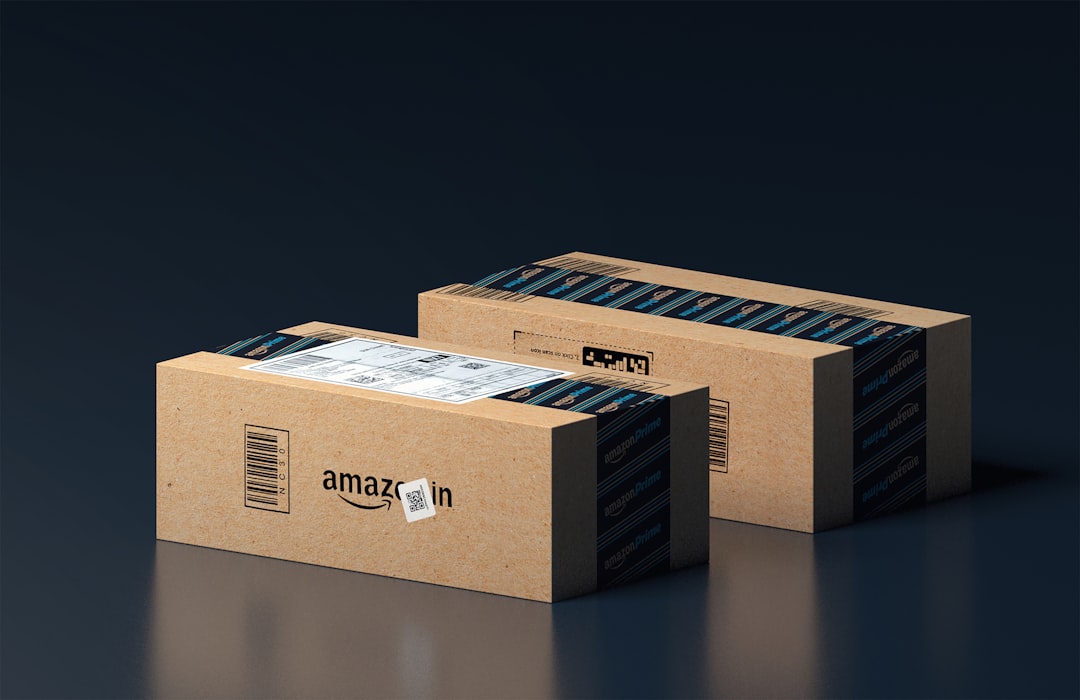Amazon Upgraded to Buy: Dash Cart System Enhances Grocery Shopping

Amazon's Strategic Shift Towards Dash Cart System: A Positive Outlook
On Wednesday, April 3, 2024, Bank of America Securities upgraded its rating on Amazon (AMZN:NASDAQ) to a Buy, despite maintaining a previous recommendation of hold. This adjustment came as Amazon's stock was trading at $180.69, as detailed in a report by StreetInsider titled "BofA Securities Says Amazon.com (AMZN) is 'Still tinkering with grocery: Smart Carts next up'." This change in rating reflects a positive outlook on Amazon's strategic initiatives, particularly in the grocery sector, where the company is making significant technological advancements.
Amazon's decision to phase out its cashierless Just Walk Out technology in favor of the Dash Cart system in its grocery stores is a strategic pivot aimed at enhancing the customer shopping experience. Introduced in 2020, the Dash Cart system utilizes advanced technology, including ceiling-mounted cameras and shelf sensors, to allow customers to track their purchases and spending in real-time. This move addresses the limitations of the Just Walk Out system by providing customers with the ability to monitor their receipts and savings more effectively. While the cashierless technology will no longer be featured in Amazon's grocery stores, it will continue to be a key component of the Amazon Go stores, where it has been well-received by customers.
The shift towards the Dash Cart system is part of Amazon's broader strategy to strengthen its retail presence both online and offline, improve distribution channels, and enhance delivery services. This approach has resonated well with investors, as evidenced by Amazon's stock outperforming the industry with an 18.9% return on a year-to-date basis. The company's financial outlook for 2024 is also promising, with the Zacks Consensus Estimate projecting sales to reach $641.36 billion, marking a year-over-year growth of 11.6%. Furthermore, the consensus estimate for 2024 earnings is set at $4.08 per share, indicating a substantial year-over-year growth of 40.7%. These positive projections are supported by a recent 0.5% upward revision in earnings estimates over the past 30 days, reinforcing Amazon's stable investment outlook as indicated by its Zacks Rank #3 (Hold).
Amazon's financial performance is further highlighted by its efficient use of assets and effective inventory management. The company's asset turnover ratio over the trailing twelve months (TTM) stands at approximately 1.09, demonstrating its ability to generate sales efficiently. Additionally, Amazon boasts an impressive inventory turnover ratio of about 9.15 TTM, showcasing its capability in managing inventory levels relative to sales. The company's operating profit margin of approximately 6.41% TTM reflects its proficiency in converting a portion of its revenue into operating profit.
In its latest quarterly financial statement, Amazon reported significant revenue of roughly $169.96 billion, alongside a cost of revenue amounting to about $92.55 billion and operating expenses totaling approximately $64.05 billion. This resulted in a gross profit of around $77.41 billion. The balance sheet further reveals a current inventory value of approximately $33.32 billion, emphasizing the scale of Amazon's operations. Additionally, the company's investment in property, plant, and equipment net stands at about $276.69 billion, highlighting its substantial commitment to long-term assets and infrastructure. These financial metrics underscore Amazon's robust performance and strategic focus on enhancing its retail and technological capabilities.
| Symbol | Price | %chg |
|---|---|---|
| BELI.JK | 378 | -0.53 |
| MAPA.JK | 715 | -0.7 |
| BUKA.JK | 168 | -0.6 |
| ACES.JK | 456 | -0.88 |

Marjorie Taylor Greene's Investment in Amazon (NASDAQ:AMZN) and Its Implications
- Marjorie Taylor Greene's recent purchase of Amazon.com Inc. (NASDAQ:AMZN) shares highlights the ongoing interest in major tech companies.
- Amazon's AWS experienced a significant outage, emphasizing the critical role of cloud services in global digital infrastructure.
- Amazon is pushing automation in its warehouses with robots like Sparrow, Cardinal, and Proteus, aiming to enhance efficiency and reduce human labor reliance.
On October 15, 2025, Marjorie Taylor Greene engaged in a purchase transaction involving shares of Amazon.com Inc. (NASDAQ:AMZN). The transaction amount ranged between $1,001 and $15,000. Amazon, a global leader in e-commerce and cloud computing, is known for its vast array of services, including Amazon Web Services (AWS), which plays a crucial role in digital infrastructure worldwide.
Recently, AWS experienced a significant outage that disrupted global internet connectivity, affecting operations across thousands of platforms. This incident highlighted the world's heavy reliance on a limited number of cloud providers. AWS has since restored its systems, but the event underscores the critical role Amazon's cloud network plays in global digital infrastructure.
In addition to its cloud services, Amazon is advancing its automation efforts with the introduction of robots named Sparrow, Cardinal, and Proteus. These robots are gradually taking over tasks traditionally performed by human workers in Amazon's warehouses. This move is part of Amazon's broader strategy to enhance efficiency and reduce reliance on human labor in its operations.
Amazon's stock is currently trading at $222.24 on the NASDAQ, reflecting an increase of 2.66% or $5.76. The stock's price today has ranged from a low of $218 to a high of $222.26. Over the past year, Amazon's stock has reached a high of $242.52 and a low of $161.38. The company's market capitalization stands at approximately $2.37 trillion, with a trading volume of 19.64 million shares.

Amazon (NASDAQ:AMZN) Price Target Update and Financial Overview
- Laura Martin from Needham sets a new price target of $265 for Amazon (NASDAQ:AMZN), indicating a potential upside of about 23.4%.
- Despite better-than-expected Q2 results, Amazon's stock price declined, leading analysts to raise their price targets.
- Amazon's retail segment boosts quarterly performance, but AWS shows mixed results, viewed by analysts as a buying opportunity despite recent stock weakness.
On August 1, 2025, Laura Martin from Needham set a price target of $265 for Amazon (NASDAQ:AMZN). At the time, the stock was trading at $214.75, suggesting a potential upside of about 23.4%. Amazon, a leading e-commerce and cloud computing company, competes with giants like Walmart and Microsoft. Despite recent stock fluctuations, analysts remain optimistic about its future.
Amazon recently reported better-than-expected second-quarter results, yet its stock price declined. Analysts responded by raising their price targets and maintaining positive ratings. For instance, Bank of America's Justin Post increased his target from $265 to $272, while RBC Capital's Brad Erickson raised his from $230 to $240. These adjustments reflect confidence in Amazon's long-term potential.
The company's retail segment significantly boosted its quarterly performance. However, Amazon Web Services (AWS) reported mixed results, possibly contributing to the stock's decline. Despite this, analysts view the current stock weakness as a buying opportunity. Gene Munster expressed confusion over the stock's performance, questioning, "I don’t know what’s wrong with it."
Amazon's stock price is currently $214.75, marking an 8.27% decrease with a change of $19.36. Today, the stock fluctuated between $212.80 and $220.44. Over the past year, it reached a high of $242.52 and a low of $151.61. The company's market capitalization is approximately $2.28 trillion, with a trading volume of 118.79 million shares on the NASDAQ.

Amazon (NASDAQ:AMZN) Upgraded by Cowen & Co. Amid Cloud Competition
- Cowen & Co. upgraded Amazon to a "Buy" rating, despite recent challenges in the cloud sector and competition from Microsoft and Google.
- Amazon's stock experienced a decline following its quarterly results, primarily due to unmet investor expectations for AWS.
- Analysts from UBS and JPMorgan see the decline as a buying opportunity, with JPMorgan increasing their price target for Amazon.
On August 1, 2025, Cowen & Co. upgraded Amazon (NASDAQ:AMZN) to a "Buy" rating, with the stock priced at $216.23. Amazon, a global e-commerce and cloud computing giant, faces competition from companies like Microsoft and Google, especially in the cloud sector. Despite the upgrade, the action taken was to hold, reflecting cautious optimism.
Amazon's stock recently experienced a decline following its quarterly results, primarily due to unmet investor expectations for Amazon Web Services (AWS). AWS, a key revenue driver, met but did not exceed expectations, contributing to the stock's drop. In contrast, competitors like Microsoft and Google have shown stronger cloud growth, adding pressure on Amazon to enhance its cloud performance.
Despite the decline, several analysts see this as a buying opportunity. UBS analysts advise traders not to be deterred by Amazon's increasing investments in AI infrastructure. This sentiment is echoed by JPMorgan analysts, who suggest investors "buy the pullback" as Amazon's stock fell over 6% in premarket trading. They have increased their price target for Amazon to $265 from $255, indicating a potential 23% upside.
Amazon's stock is currently trading at $216.13, reflecting a decrease of 7.68% with a price drop of $17.98. The stock has fluctuated between a low of $215.09 and a high of $220.44 during the day. Over the past year, Amazon's stock has reached a high of $242.52 and a low of $151.61, showcasing its volatility in the market.
Amazon's market capitalization stands at approximately $2.29 trillion, highlighting its significant presence in the market. Today's trading volume for Amazon is 65.69 million shares, indicating active investor interest. Despite recent challenges, Amazon remains a key player in the e-commerce and cloud computing sectors.

Amazon (NASDAQ:AMZN) Quarterly Earnings Preview
Amazon (NASDAQ:AMZN) is set to release its quarterly earnings on July 31, 2025. Analysts expect an earnings per share (EPS) of $1.31 and revenue of approximately $161.78 billion. Amazon is a global e-commerce and cloud computing giant, competing with companies like Microsoft and Google in the cloud sector. Amazon's second-quarter results will focus on infrastructure investments and its cloud business.
Wall Street is eager to see if investments in artificial intelligence are driving growth. These areas are crucial for Amazon's future, as highlighted by GeekWire. The company's performance in these sectors will be closely watched. Amazon's financial metrics provide insight into its market position. With a price-to-earnings (P/E) ratio of 37.01, investors are willing to pay $37.01 for every dollar of earnings. The price-to-sales ratio of 3.76 reflects the market's valuation of its revenue, while the enterprise value to sales ratio of 3.86 suggests the company's total value relative to its sales. The enterprise value to operating cash flow ratio of 22.04 highlights Amazon's valuation in relation to its cash flow from operations.
An earnings yield of 2.70% offers insight into the return on investment for shareholders. The debt-to-equity ratio of 0.44 indicates a moderate level of debt compared to equity, suggesting a balanced financial structure. Amazon's current ratio of 1.05 suggests it has a slightly higher level of current assets compared to current liabilities. This can be a sign of good short-term financial health, indicating that Amazon is well-positioned to meet its short-term obligations.

Amazon (NASDAQ:AMZN) Expands "Buy with Prime" Initiative with Dr. Berg Nutritionals
- Amazon's "Buy with Prime" initiative aims to enhance the shopping experience by integrating more brands like Dr. Berg Nutritionals.
- The addition of new brands to the Prime ecosystem is expected to drive growth and customer loyalty for Amazon.
- Despite a significant stock sale by Jeffrey P. Bezos, Amazon's market position remains strong with a current stock price of $222.66 and a market capitalization of approximately $2.36 trillion.
Amazon (NASDAQ:AMZN) is a global leader in e-commerce, cloud computing, and digital streaming. The company is known for its vast online marketplace and its Prime membership program, which offers benefits like free shipping and exclusive deals. Amazon competes with other major retailers like Walmart and Alibaba. The "Buy with Prime" initiative is a strategic move to integrate more brands, such as Dr. Berg Nutritionals, into its ecosystem, enhancing the shopping experience for Prime members.
The addition of Dr. Berg Nutritionals to the "Buy with Prime" initiative is expected to provide Prime members with more options and convenience. This aligns with Amazon's strategy to leverage its Prime membership to drive growth and customer loyalty. By expanding its brand offerings, Amazon aims to solidify its position in the online retail market, offering a wider range of products to its customers.
Despite a recent stock sale by Jeffrey P. Bezos, Amazon's Executive Chair, the company remains strong in the market. On July 7, 2025, Bezos sold 2,046,582 shares at approximately $223.92 each. This transaction did not significantly impact his holdings, as he still owns 902,480,530 shares. The sale reflects Bezos's continued involvement and confidence in Amazon's future.
Amazon's stock price is currently $222.66, showing a slight increase of 0.12, or approximately 0.054%. The stock has fluctuated between $219.70 and $222.79 during the trading day. Over the past year, Amazon's stock has seen a high of $242.52 and a low of $151.61, indicating its resilience in the market. The company's market capitalization stands at approximately $2.36 trillion, highlighting its significant presence in the industry.
Today's trading volume for Amazon is 19,736,405 shares, demonstrating active investor interest. The company's ability to maintain a strong market position, despite fluctuations, is a testament to its robust business model and strategic initiatives like "Buy with Prime." As Amazon continues to expand its brand offerings, it is well-positioned to enhance customer loyalty and drive future growth.

Amazon (NASDAQ:AMZN) Receives "Market Outperform" Rating from Citigroup
- Citigroup upgrades Amazon's rating to "Market Outperform," signaling confidence in its future performance.
- Amazon's stock price reflects a slight increase, with significant fluctuations over the past year.
- The company is considering a multibillion-dollar investment in AI company Anthropic to enhance its capabilities in artificial intelligence.
Amazon (NASDAQ:AMZN) is a global leader in e-commerce and cloud computing. Known for its vast product range and services, Amazon continues to innovate and expand its business. The company faces competition from other tech giants like Microsoft and Google, especially in the cloud computing sector. On July 10, 2025, Citigroup updated its rating for Amazon to "Market Outperform," indicating confidence in the company's future performance.
At the time of Citigroup's announcement, Amazon's stock was priced at $222.54. This price reflects a 1.45% increase, or $3.18, from previous levels. The stock has traded between $220.47 and $224.29 today, showing some volatility. Over the past year, Amazon's stock has seen a high of $242.52 and a low of $151.61, indicating significant fluctuations in its market value.
Amazon is considering a further multibillion-dollar investment in the AI company Anthropic. This potential investment aims to strengthen their strategic partnership, as highlighted by the Financial Times. Such a move could enhance Amazon's capabilities in artificial intelligence, a field that is becoming increasingly important in the tech industry.
Amazon's market capitalization is approximately $2.36 trillion, reflecting its massive scale and influence in the market. The company's stock is actively traded, with a trading volume of 37.67 million shares on the NASDAQ today. This high volume indicates strong investor interest and confidence in Amazon's growth prospects.
Overall, Citigroup's "Market Outperform" rating for Amazon suggests optimism about the company's future. With potential investments in AI and a strong market presence, Amazon is well-positioned to continue its growth trajectory.

TD Cowen Raises Amazon Price Target, Expects Q2 Beat and Strong Q3 Guidance
TD Cowen lifted its price target on Amazon.com (NASDAQ:AMZN) to $250 from $240 while reiterating a Buy rating, citing confidence in upcoming earnings and continued business momentum.
The analysts expect Amazon’s Q2 2025 results to beat consensus estimates, forecasting revenue and operating income to come in approximately 1% and 10% above expectations, respectively. This optimism is driven by sustained strength across AWS, advertising, and e-commerce segments.
Looking ahead, the firm also anticipates a solid Q3 guide, with their projections 1.1% above consensus for revenue and 6% higher for operating income. TD Cowen has slightly raised its long-term revenue and profitability estimates to reflect the continued positive momentum, particularly with AWS showing signs of re-acceleration.
The new $250 price target reflects the firm’s bullish outlook on Amazon’s multi-segment growth and operational leverage.







